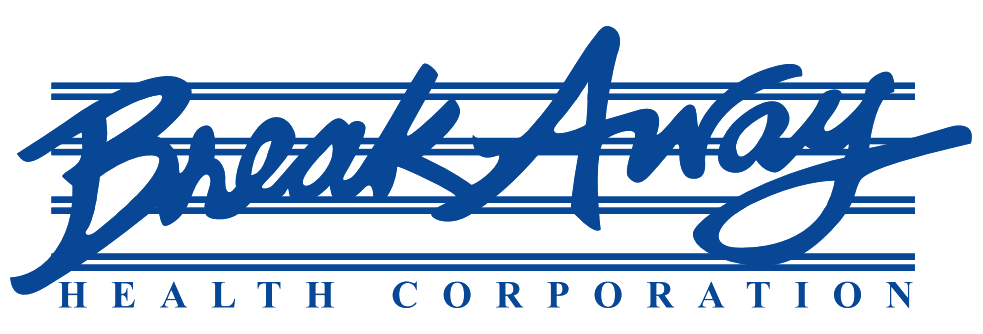The Hidden Struggle Behind Xanax Withdrawal
Do you, or someone you care about, rely on Xanax just to get through the day? You’re not alone. Across America, millions of people are on Xanax to ease anxiety and panic disorders. It’s a fast-acting medication that supplies sense during chaos and restores people’s control—temporary at least. But eventually, what began as a solution can creepily become a problem.
Xanax, when taken for too long or in increasing amounts, can lead to dependence. And when someone tries to stop using it? That’s when things can become frightening. The effects of withdrawal are often intense—bringing not just physical pain but emotional turmoil as well.
If you’re reading this because you or someone close to you is thinking about quitting Xanax, know this: it’s okay to ask for help. In fact, it’s one of the bravest things you can do.
At Breakaway Health in Costa Mesa, we meet people where they are—with compassion, care, and a team of professionals who understand how challenging withdrawal can be. No judgment. Just support and a plan that makes healing possible.
What is Xanax and Why Is It Prescribed?
Xanax, also known by its generic name alprazolam, is a prescription medication in the benzodiazepine family. These drugs work by slowing down brain activity, helping calm intense fear or anxiety. For people suffering from overwhelming panic attacks or constant worry, Xanax can feel like a lifesaver—offering near-instant relief from symptoms that interfere with daily life.
Doctors usually prescribe Xanax for anxiety disorders, panic disorders, and sometimes short-term insomnia. It kicks in quickly—often within 30 to 60 minutes—making it a go-to for immediate symptom control. That quick relief is a big reason why so many people rely on it. But it’s also part of what makes Xanax risky over time.
As the body becomes used to the drug, tolerance develops. A person might notice that their usual dose no longer provides the same calming effect. It’s a subtle shift at first—maybe taking an extra pill during a tough week or doubling up after a stressful event. But gradually, the line between using Xanax for help and needing it just to feel “normal” begins to blur.
This is where dependency can begin. And when people start using more than prescribed, or take Xanax without medical supervision, it often leads to misuse and addiction. What started as a way to find peace can quickly become a struggle to break free.
Why Do People Abuse Xanax?
People may begin abusing Xanax for several reasons:
- Self-medicating stress or trauma: Some turn to Xanax to feel numb or calm in difficult situations.
- Chasing the high: When taken in large amounts, Xanax can create feelings of euphoria.
- Combining with other substances: It’s sometimes mixed with alcohol or opioids to increase its effects—an extremely dangerous practice.
When abuse begins, people often drift away from taking their medication as intended. Instead, they start relying on it just to function—just to make it through work, parenting, or daily responsibilities. The pills that once offered occasional relief become a crutch they feel they can’t live without.
How do people abuse Xanax?
It’s not uncommon for people to crush up Xanax pills and snort them in an attempt to feel the effects faster. Others will take much more than they’ve been prescribed, looking for an intensified sense of relaxation or escape from their anxiety. A desperate search for relief can quickly become a potentially fatal habit—one that chemically alters the brain and body into dependence on the drug for the most mundane daily functioning.
With time, this action alters brain chemistry and causes dependence. Once dependent, withdrawal symptoms may be caused by stopping or even decreasing the dose.
What Do Xanax Withdrawals Feel Like?
Xanax withdrawals affect both the mind and body. Symptoms can begin as soon as six to twelve hours after the last dose and may intensify over several days. The severity of withdrawal depends on factors like dosage, length of use, and whether other substances are involved.
Common Withdrawal Symptoms Include:
- Anxiety and panic attacks
- Insomnia or disturbed sleep
- Irritability and restlessness
- Muscle aches and body tremors
- Sweating and rapid heartbeat
- Nausea, vomiting, or stomach cramps
- Severe mood swings
- Hallucinations or delusions (in rare cases)
- Seizures (most severe cases)
So when someone asks, “Are Xanax withdrawals painful?” The answer is absolutely—both physically and emotionally. It’s not just about headaches or tremors. It’s the overwhelming anxiety that comes crashing back, the sleepless nights, the racing heart, the intense mood swings, and sometimes even hallucinations or seizures. For many, it feels like losing control over their body and mind all at once. Without proper support, these symptoms can feel impossible to manage, which is why compassionate, professional care is so important during this stage.
Health Consequences of Xanax Withdrawal
Withdrawal isn’t just uncomfortable—it can also be dangerous. The brain, which has adjusted to functioning with the presence of Xanax, is suddenly forced to operate without it. That sudden shift can create chaos in the nervous system.
Mental Health Effects
Withdrawal can cause a major spike in anxiety—often so intense that it feels unbearable. In some cases, the anxiety that returns is even worse than what led the person to seek help in the first place. Feelings of hopelessness and deep sadness can take hold, and for many, depression settles in quickly. Some may feel trapped in their own minds, struggling with emotions that seem impossible to escape. In the most serious situations, suicidal thoughts can emerge, especially when someone feels isolated or unsupported.
That’s why mental health care during withdrawal isn’t just helpful—it’s essential. With the right care, people don’t have to suffer in silence. They can begin to feel safe again, supported by professionals who know how to ease the emotional weight of withdrawal and help them take meaningful steps forward.
Physical Consequences
In some cases, seizures can occur—suddenly and without warning—putting a person at serious risk of injury or worse. The heart may race uncontrollably, blood pressure can spike, and the body feels like it’s in panic mode, even if the mind is trying to stay calm. These symptoms aren’t just scary—they’re medical emergencies.
The health consequences of Xanax withdrawal make it clear that this process shouldn’t be faced alone. It’s not about being strong enough to tough it out—it’s about staying safe. When trained professionals are present to adjust medication, ease symptoms, and respond to crises, it gives a person the best chance to heal without added trauma or risk.
Are There Any Long-Term Effects of Xanax?
Yes, long-term use can cause:
- Cognitive impairment (memory loss, trouble concentrating)
- Mood disorders like chronic depression or aggression
- Sleep disturbances that last even after stopping use
- Dependency on other substances
- Heightened risk for relapse
Even after withdrawal symptoms fade, some people experience what’s called post-acute withdrawal syndrome (PAWS)—a lingering state of discomfort or dysregulation that can last for weeks or months.
The long-term Xanax effects often depend on whether someone receives professional support and ongoing care. Effective medication management, therapy, and a safe environment significantly reduce the likelihood of lasting complications.
Xanax Withdrawals vs. Other Drug Withdrawals
Compared to other types of drug withdrawals, Xanax withdrawals can be particularly intense. Unlike opioids or stimulants, benzodiazepines like Xanax act directly on the central nervous system. That means stopping suddenly can have profound consequences, even leading to life-threatening complications if not managed properly.
Key Differences:
- Higher seizure risk than most drugs
- Faster onset of withdrawal symptoms
- Longer-lasting emotional side effects
Because of this, detoxing from benzodiazepines should always be done in a clinical environment where people are surrounded by medical staff trained to respond to the challenges that may arise. Going cold-turkey or trying to manage withdrawal alone at home can be not only overwhelming but truly dangerous. It’s not just about discomfort—it’s about protecting your brain, your body, and your life. With professional care, you gain a sense of safety, structure, and support that makes it possible to begin healing with fewer risks and greater peace of mind.
Managing Withdrawal with Professional Support
Xanax withdrawal isn’t something to push through on your own. At Breakaway Health in Costa Mesa, we provide structured care that helps clients safely detox while addressing the mental health and emotional components that accompany withdrawal.
Our Approach Includes:
- 24/7 medical monitoring to track symptoms and prevent complications
- Medication management to taper Xanax safely
- Therapy and support groups to reduce anxiety and improve coping skills
- Follow-up care to support long-term recovery from substance abuse
We believe that healing begins with feeling safe—safe in your surroundings, safe with the people helping you, and safe within your own body again. That kind of safety doesn’t come from willpower alone. It comes from being in a place where you’re cared for, listened to, and supported by professionals who truly understand what you’re going through. At Breakaway Health, we create that kind of environment—where compassion and expert care go hand-in-hand to give you a real chance at recovery.
Call Breakaway Health Today!
Withdrawal from Xanax can feel overwhelming, but you don’t have to face it alone. Whether you’re wondering what Xanax withdrawals are or exploring treatment options for yourself or a loved one, Breakaway Health is ready to help.
Our team understands the Xanax symptoms, complications of Xanax addiction, and how to provide meaningful, effective care that makes real recovery possible.
We’re here to help you or your loved one get started living with clarity and stability again. Call Breakaway Health Today!
Frequently Asked Questions
1. What is Xanax?
Xanax is a fast-acting benzodiazepine used to treat anxiety and panic disorders. It can become habit-forming when taken over a long period or misused.
2. What do Xanax withdrawals feel like?
Xanax withdrawals may include anxiety, muscle aches, nausea, insomnia, mood swings, and in severe cases, seizures. Symptoms can begin within 12 hours after stopping.
3. Are there any long-term effects of Xanax?
Yes, long-term use may cause memory issues, mood disorders, dependency, and difficulty sleeping. Professional treatment can reduce the risk of these lasting effects.
4. Why do people abuse Xanax?
People abuse Xanax to feel calm, escape stress, or increase its effects when mixed with alcohol or other drugs. Abuse often leads to addiction and dangerous consequences.
5. Are Xanax withdrawals painful?
Yes, withdrawals can be both emotionally and physically painful. Professional detox support is strongly recommended for managing symptoms safely and comfortably.







